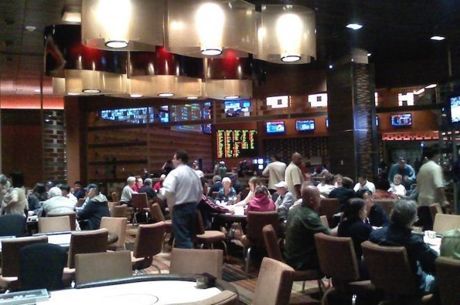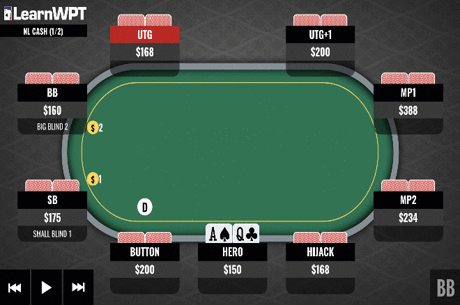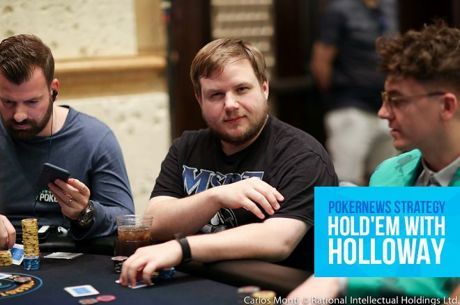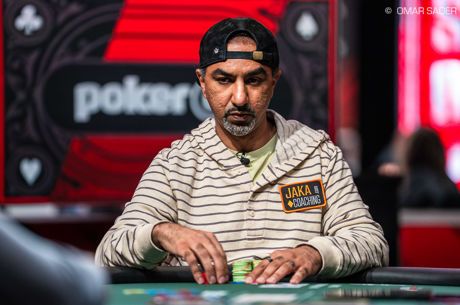Facing a Check-Raise After Flopping Top Pair With Ace-Queen
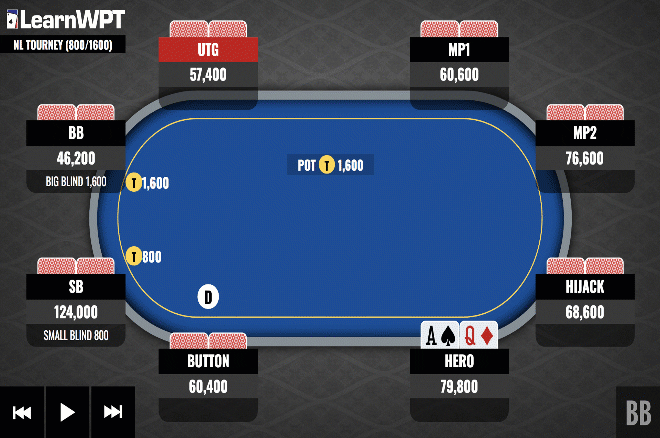
DECISION POINT: In a no-limit hold'em tournament, it folds to a middle position player who limps in. You raise with A?Q?. It folds to the small blind who calls, as does the MP player. The flop is A?10?6?. The small blind and middle position players both check. You bet, and the small blind raises. The MP player folds. Action is on you...
PRO ANSWER: In general, we would continue against this check-raise from the SB in a heads-up pot. Given that we bet around 35 percent pot in a spot where we will often continuation bet with a high frequency, the small blind could be check-raising with a number of hands that we have beat. The relatively low SPR (stack-to-pot ratio) of approximately 3.5-to-1 is an argument for continuing as well.
However, the presence of another opponent on the flop makes this situation worse for us, since it should narrow the small blind's check-raising range. That fact makes this spot much closer than it appears at first glance. Many opponents only check-raise a very narrow range with a third player still in the hand.
Whether or not to continue with A-Q comes down to how many semi-bluff check-raises are in our opponent's range. Their semi-bluff check-raising range could consist of gutshots and backdoor draws such as K-Q, K-J, Q-J, 9-8, or 8-7 (all suited). If their range contains only value hands such as A-T, A-6-suited, 6-6, T-T, and A-Q+, then we have a clear fold.
Given that the middle position player checked the flop and we bet about 35 percent pot in a high c-bet frequency spot, we should include a number of those type of semi-bluff combos in the SB's range as a default.
Against an opponent who rarely or never check-raises as a semi-bluff in a multi-way pot, we can get away from our A-Q. Facing opponents that are capable of check-raising here with gutshots and backdoor draws, we should continue with A-Q.
As a default, we should assume our opponents are capable of bluffing some of the time here, so continuing with A-Q will be a profitable play. Since there are so few chips left to play and Villain can often turn lots of equity, we should often reraise all in on the flop instead of calling, even though calling would also be profitable.
Moving all in is the best play.
LearnWPT is a poker training site dedicated to transforming the poker games of rank beginners, skilled amateurs, and aspiring professionals. Offering both Live Workshops and Online Training, is a one-stop shop for poker education, designed to provide all the tools a player needs to become a winner. Visit LearnWPT.com today and get 2 Free Strategy Episodes that will immediately impact how you play. LearnWPT.com - Think Like a Pro!

